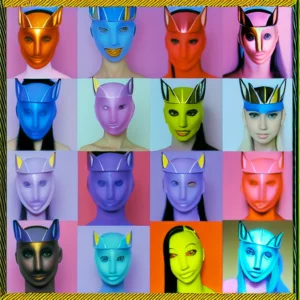Reality and Perception
Our shared physical reality is the most common state of reality we experience, but it certainly isn’t the only one. Our nighttime dreams are another state, as are astral experiences, near-death experiences, and out-of-body experiences.
I regard these different levels of reality as being at different frequencies or energy levels. It’s like tuning into different TV channels. Physical reality seems slower, denser, and less malleable than the other levels.
Astral projection, out-of-body experiences, and near-death experiences could be said to occur at other frequencies than the physical universe. And within those there are a variety of sub-levels. People who are skilled at astral projection, for example, can visit different astral realms with unique properties. Some astral locales seem like close approximations of the physical world, while others are so different from physical reality they’re nearly impossible to describe.
Perhaps the best analogy I can use to describe these different realities is to compare them to states of matter. You’re intimately familiar with solid, liquid, and gas, since you interact with matter in those states every day. But did you know there are a lot more states of matter, including Bose-Einstein condensates, fermionic condensates, strange matter, degenerate matter, quark-gluon plasma, superfluids, supersolids, and possibly others? How much time do you spend interacting with those? Are they as real as solid, liquid, and gas, or some delusional physicists just make them up to convince someone to fund more of their expensive toys?
Just as there are different states of matter, there are different levels of reality. Every state of matter has unique physical and energetic properties, as do all the realms of reality your consciousness can perceive. Your inability to access all these states or realms at will is a limitation of your perceptual abilities.
I imagine you spend most of your time interacting with solids, liquids, and gases, but it’s believed that most of the matter in the visible universe is actually in the plasma state. So if you were to assume that the states of matter you interact with personally are the only ones that exist, you’d be very wrong. You’d also be wrong if you assumed those states were the most common. With respect to the vastness of the physical universe, your personal experience of matter is rather atypical. You’re basically living in a bubble.
Similarly, I think it would be just as big a mistake to assume that this physical reality is the only reality there is. I suspect this realm is only one among many, and I doubt it’s the most popular hangout for conscious beings. Some people have written fascinating books about their astral explorations, like Robert Monroe’s Far Journeys, and some astral realms appear to be rather crowded.
It’s common to deny the existence of what we haven’t personally experienced, but such behavior is rather limiting. I think a better attitude is to be an explorer. If you don’t know what’s out there, and you’re curious about it, go take a look around. You can use the maps created by others as a guide — at least to the extent you find them helpful. That’s a better approach than summarily claiming, “There be dragons.”
Opening ourselves up to what may exist but which hasn’t yet been observed is how we invite new experiences into our reality. This is not merely wishful thinking or open-mindedness. It is the process by which we creatively sculpt reality itself.




